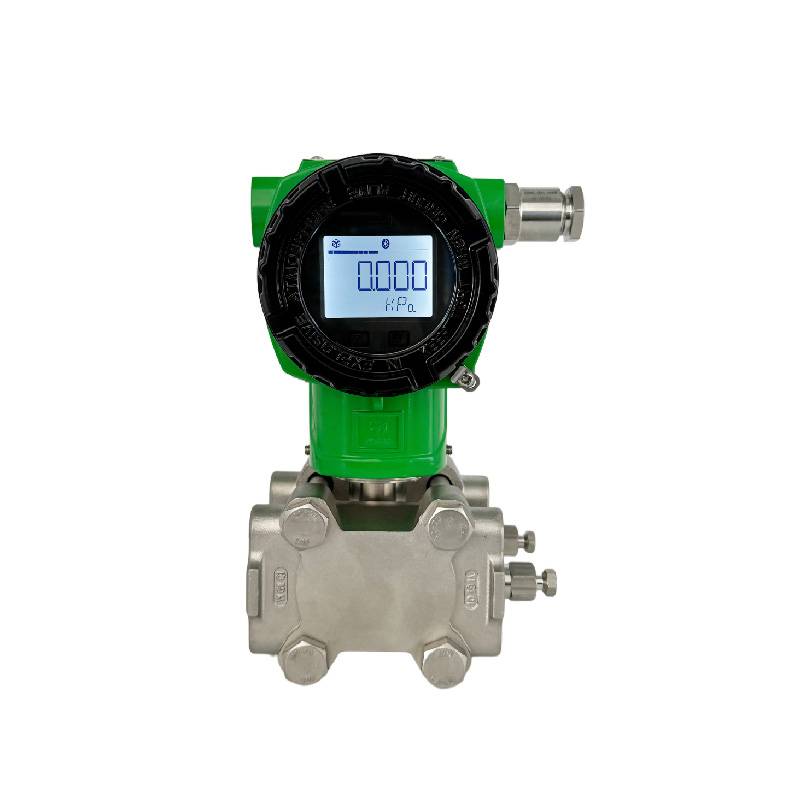In the field of industrial automation, differential pressure transmitters play an extremely important role. They are responsible for accurately measuring the pressure difference of fluids or gases and converting it into reliable electrical signals, providing indispensable data support for the control and monitoring of numerous industrial processes. However, as the requirements for precision and reliability in industrial production continue to increase, the long-term stability of differential pressure transmitters has become a focus of great attention. How to optimize the long-term stability of differential pressure transmitters and ensure that they always maintain accurate and reliable performance during long-term operation is a key issue that professionals in the industrial field need to explore and solve in depth.

1. Selection of High-Quality Sensor Elements: Laying a Stable Foundation
The core component of a differential pressure transmitter is the sensor, whose performance directly determines the long-term stability of the entire transmitter. When selecting sensors, those with high stability and anti-drift characteristics should be given priority. For example, adopting advanced silicon piezoresistive sensor technology, it can exhibit minimal zero drift and sensitivity drift within the pressure measurement range. The sensor chips manufactured through precise micro-machining processes can effectively reduce measurement errors caused by temperature changes, stress impacts, and the passage of time. Some well-known brand sensors also use special compensation circuits and packaging technologies to further enhance the sensor's adaptability to environmental changes, thus providing a solid foundation for the long-term stable operation of the differential pressure transmitter.
2.Precise Temperature Compensation Mechanism: Coping with Environmental Challenges
Temperature is one of the key factors affecting the stability of differential pressure transmitters. In industrial sites, the ambient temperature often changes significantly, and such changes may lead to changes in the performance of the sensor, thereby affecting the accuracy of measurement. To optimize the long-term stability of differential pressure transmitters, it is necessary to establish a precise and effective temperature compensation mechanism. Modern advanced differential pressure transmitters usually have built-in high-precision temperature sensors that can monitor changes in the ambient temperature in real time. Through the use of advanced algorithms and calibration data, the transmitter can automatically compensate for the zero drift and span drift caused by temperature changes. For example, a temperature compensation algorithm based on polynomial fitting can establish a mathematical model between temperature and measurement errors based on a large amount of experimental data, so as to accurately correct the measurement values under different temperature conditions and ensure that the differential pressure transmitter maintains stable performance over a wide temperature range.
3.Reasonable Mechanical Structure Design: Ensuring Physical Stability
The mechanical structure design of the differential pressure transmitter is also of great significance for its long-term stability. During the design process, emphasis should be placed on improving the rigidity and vibration resistance of the structure to reduce the impact of external mechanical vibrations and shocks on the measurement results. For example, using a sturdy metal shell and a reasonable internal support structure can effectively prevent sensor components from loosening or deforming due to vibration. Meanwhile, for the pressure interface and pipeline connection parts, a reasonable sealing structure and buffer device should be designed to avoid measurement errors caused by pressure fluctuations or fluid impacts. In addition, the optimized mechanical structure should be convenient for installation, maintenance, and calibration, ensuring that various operations can be carried out conveniently during long-term use and reducing stability problems caused by human factors.
4. Intelligent Calibration and Self-Diagnosis Functions: Continuous Performance Optimization
To ensure that the differential pressure transmitter always maintains the best performance during long-term operation, intelligent calibration and self-diagnosis functions are indispensable. Modern differential pressure transmitters have the ability to perform regular automatic calibration. They can automatically start the calibration procedure according to preset time intervals or specific trigger conditions. During the calibration process, the transmitter will use its internal standard reference source to accurately calibrate the measurement circuit and the sensor, correcting the drift and errors generated during long-term use. Meanwhile, the self-diagnosis function can monitor the various working parameters and states of the transmitter in real time, such as the output signal of the sensor, the power supply voltage, and the effect of temperature compensation. Once an abnormal situation is detected, the transmitter will promptly issue an alarm and provide detailed fault diagnosis information, facilitating maintenance personnel to quickly locate and solve the problem. Through the synergistic effect of the intelligent calibration and self-diagnosis functions, the differential pressure transmitter can achieve self-optimization and self-repair, greatly improving its long-term stability and reliability.

5. Strict Quality Control and Testing Processes: Ensuring Reliable Quality
During the manufacturing process of differential pressure transmitters, strict quality control and testing processes are important links to ensure their long-term stability. From the inspection of raw material procurement to the monitoring of each process in the production process, and then to the comprehensive performance testing of finished products, a complete quality management system needs to be established. In the raw material inspection link, it should be ensured that the quality of sensor elements, electronic components, and other key components meets high-standard requirements. In the production process, advanced automated production equipment and precise testing instruments are used to strictly control each production link to ensure the consistency and stability of products. In the finished product testing stage, comprehensive performance tests should be carried out, including pressure measurement accuracy tests, temperature compensation effect tests, stability tests, and anti-interference ability tests. Only differential pressure transmitters that have passed strict quality control and testing processes can exhibit excellent stability and reliability during long-term use and meet the stringent requirements of industrial production.
The optimization of the long-term stability of differential pressure transmitters is a comprehensive project that requires taking scientific and reasonable measures from multiple aspects, such as the selection of sensor elements, the establishment of temperature compensation mechanisms, the design of mechanical structures, the application of intelligent functions, and quality control and testing. Through continuous technological innovation and process improvement, the industrial field can further improve the long-term stability of differential pressure transmitters, providing more accurate and reliable pressure measurement solutions for the industrial automation process and promoting the development of industrial production towards higher efficiency and higher quality.


